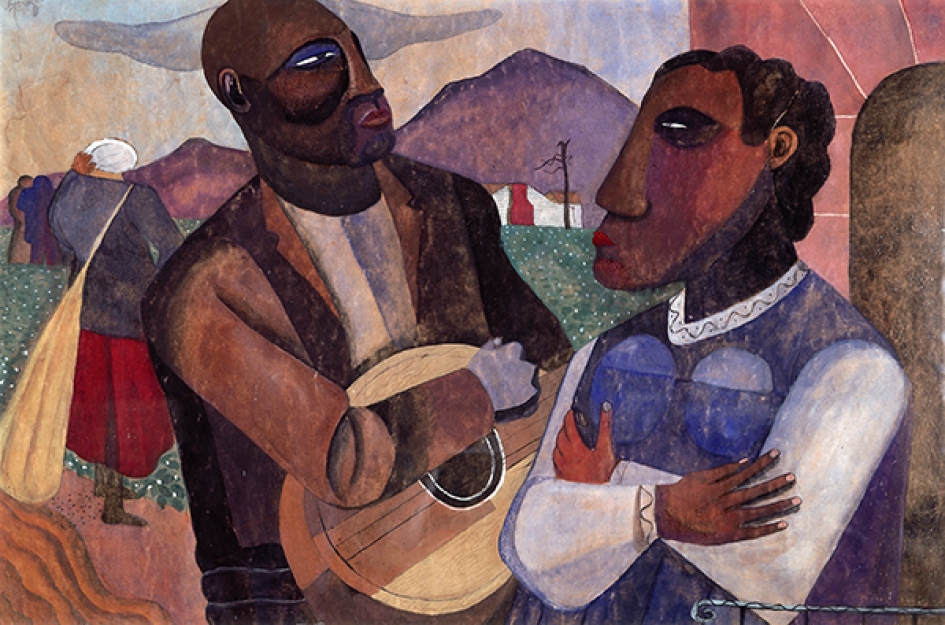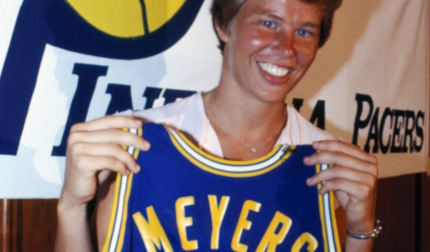Grant Hill will be the first person to tell you that he is a lucky man. Growing up, his parents collected art and exposed him to a world that many kids do not have a chance to inhabit. “I didn’t necessarily appreciate it at the time,” he says, “but by being exposed to it at a young age, it became part of who I am. As an adult, I really wanted to build a home, to decorate it and design it, and acquiring art came to mind.”

As Hill grew older, Hill realized that art could be more than a hobby. As a history major at Duke University, Hill realized that art could be a different way to study the past. “I have always been interested in African-American history and in the Harlem Renaissance,” Hill says. “For those two reasons, I decided to focus my collection in that way.

John Coleman, Coffee Break. Oil on canvas. 30 x 36 inches, 1993.
Much of the art in Hill’s collection is centered around the cultural heritage of African-American life in the 20th century. Works by artists such as Romare Bearden, John Coleman and Malcolm Brown have allowed Hill to approach the history he has studied in a unique way. “When you go back 40-50 years, you see what the artists saw,” Hill says, “what they experienced, and the progress we’ve made. Art is a snapshot from the eyes of the artist. As someone who has always been curious about history, it has been an incredible experience.”

Romare Bearden, Number 9. Oil on rice paper on canvas. 44 1/8 x 56 inches, 1960.
Hill’s collection has now far outgrown his home. With over 120 pieces of art, much of it is stored in a facility that helps museums properly care for and store irreplaceable works. “Once you get to this stage, you have to love it,” Hill says. “It requires time, logistics, investment. It’s not free to store these works. But I’m fortunate. My wife and I enjoy it. We enjoy sharing it with family and friends, and we enjoy sharing it with the public.”
A few years ago, in an effort to bring new fans to the works, a portion of Hill’s collection toured the country. “We hoped we would be able to get more people into museums, people who may not ordinarily go,” Hill says. “And we were especially hoping to bring young people out. When we spoke to the galleries, the feedback was that they had more visitors than usual.”

Elizabeth Catlett, Standing Mother and Child. Bronze, 1978. Copyright Elizabeth Catlett. Licensed by VAGA, New York, NY
It was the uptick in young visitors that particularly pleased Hill. “The more exposure you get to art, the more you can grow,” he says. “One of the things that we feel is important with regards to young boys and girls of color, we wanted to show them examples of people who are like them, and who are capable of producing museum quality work. It doesn’t have to be about sports or entertainment; there are other ways of making it in the world.”
And despite all of the joy that Hill and his family have received from studying and sharing the work, there has been one unforeseen benefit to the collection—its value.
“My wife and I never got into it as an investment,” he says, “but considering the economy, it has been one of the better investments we have made, given how much it has appreciated in value. We have been very lucky.”

Malcolm Brown, Innocence. Watercolor. 30 x 37 1/2 inches, 1991.
Grant Hill’s Tips for New Collectors
Discover what you like
Before you start buying, visit galleries and museums and begin to form an opinion on what you like. “As athletes, we’re fortunate that we have some downtime in various cities,” Hill says. “You can go to galleries, visit bookstores and learn about what speaks to you before you open up the checkbook.”
Start small
You don’t have to start your collection with the Mona Lisa. Build slowly. “You can start out by purchasing prints,” Hill advises. “Look for things that you are drawn to. Everyone interprets art differently. What I like may be different to what you like. Try to find a certain genre that appeals to you and start there.”
Gather information
Hill recommends meeting with various dealers to gather as much information as you can before you spend any money. “Just like anything else,” Hill says, “there are people out there looking to take advantage of you. The more you know, the better off you will be.”
For more information on Grant Hill’s art collection, please visit granthill.com.





